Saddling up and going for a ride typically means riding across open fields or along designated horse trails. Nowadays, it’s much less common to see horses and their riders on a leisurely riding along a busy highway or road. But that doesn’t mean it doesn’t still occur, and it’s not illegal to do so (interstates and freeways are another story). And as one can expect, safety is paramount when it comes to riding your horse on the road.
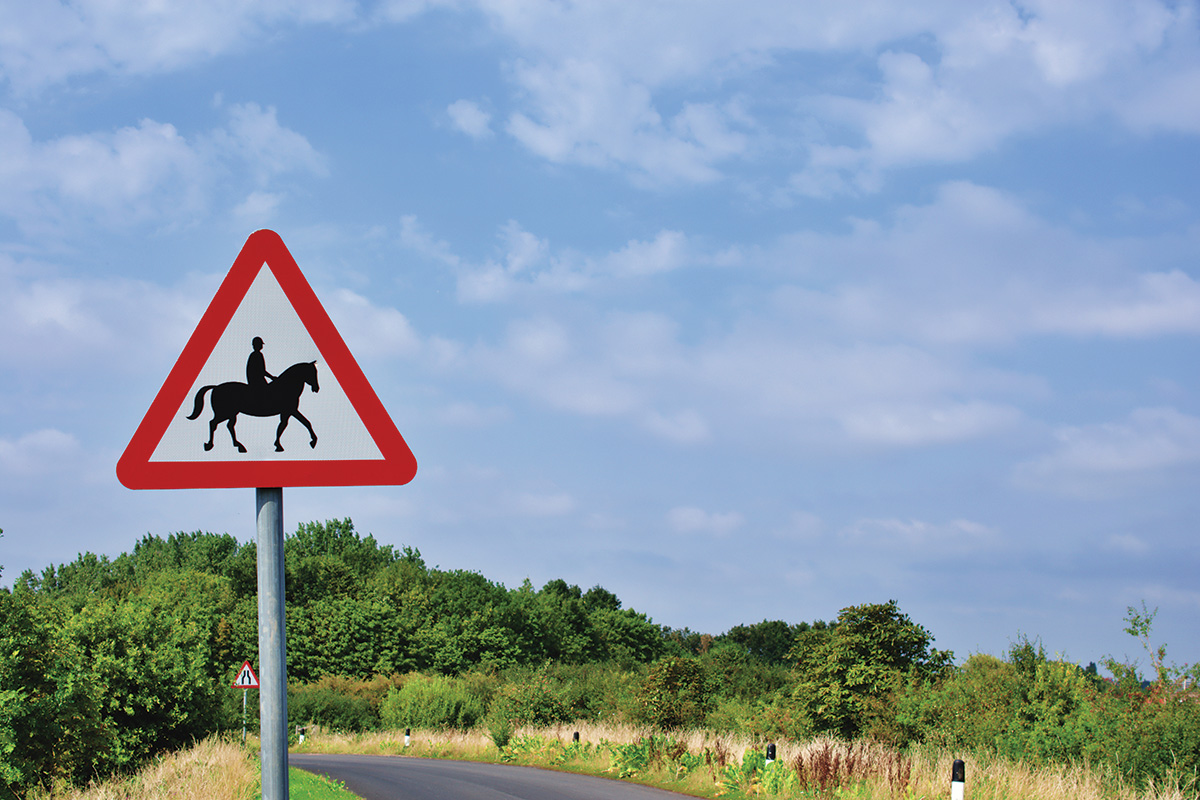
Road Rules Vary for Riding
You don’t need a license to ride a horse like you do to drive a car, but in many states, horses are governed by the same traffic laws when riding on public roads as motorized traffic. Some states, however, place horses under non-motorized traffic rules, meaning you must follow the same rules as someone riding a bicycle. The difference in wording may impact more areas than you realize—including simple things, like which side of the road on which to ride.
Kathie Troudt Riley, P.C., operates a solo law practice in Loveland, Colo., with an emphasis on equine and agricultural law. She also teaches in the Equine Sciences program at Colorado State University. Riley owns Paint Horses and Quarter Horses, and is an owner of the Flying R Ranch, where they board and train horses.
“Colorado has a specific statute that pertains to horses on our state highways,” says Riley. “Colorado Revised Statutes (CRS) Sections 42-4-109(8) and (10) provide that persons riding or leading horses along any highway in Colorado should do so on the left side of the road, facing traffic.”
However, Riley says there’s an exception if the horses are involved in herding. Coloradans still move cattle, sheep and sometimes horses by driving them on highways.
“If you’re in a horse-drawn conveyance, you use the right side of the road, like a car would,” Riley continues. “The statute states that every person riding or leading a horse or driving a horse-drawn conveyance on a roadway is granted all of the rights of a driver of a motor vehicle and is subject to all of the duties of a driver of a motor vehicle, such as obeying traffic lights and signs, yielding right of way, et cetera. Under our statutes, they’re considered ‘vehicles’ by definition.”
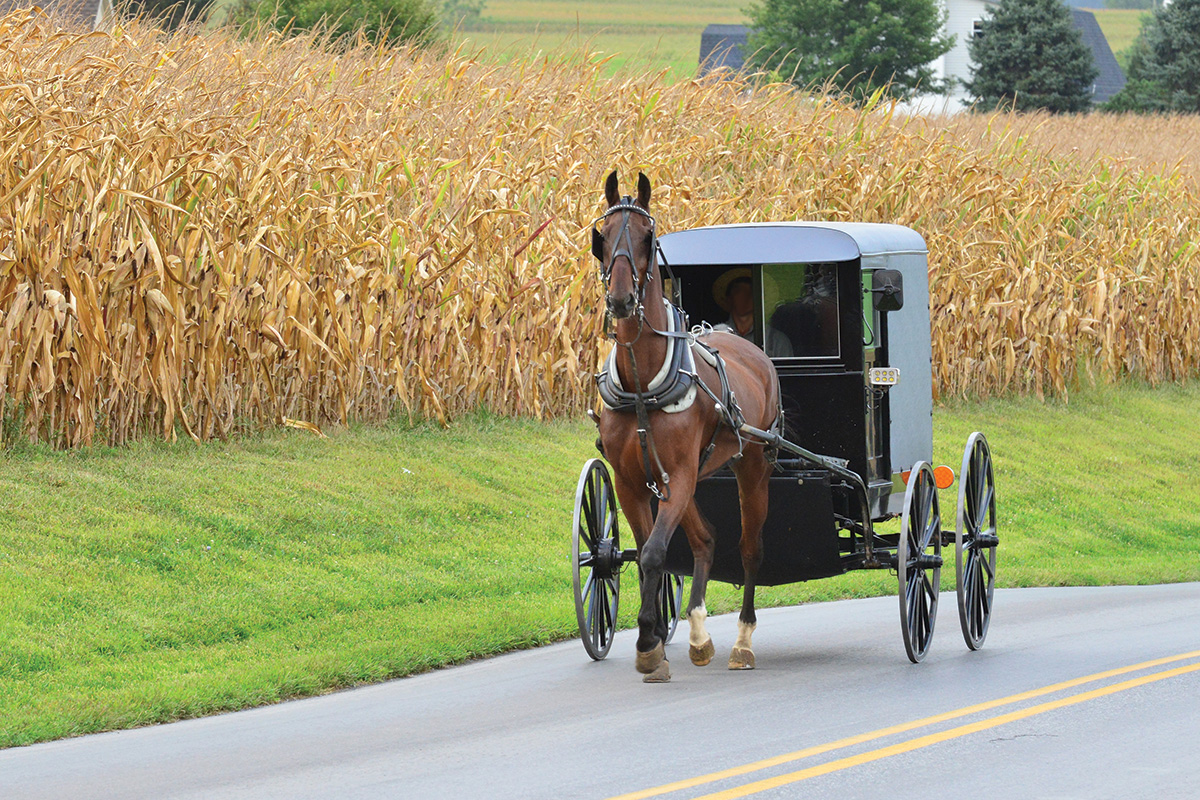
Carina Lyn Roselli, Esq., has been practicing equine law since 2015 and bases her virtual and concierge law firm, CLR Law, PLLC out of Northern Virginia. She specializes in designing comprehensive equine contracts of all varieties, building and developing new equine businesses and nonprofits, and drafting horse trusts that ensure the care and safety of horses in the event of an owner’s incapacity or death.
“Most states allow horses and horse-drawn vehicles on roadways except where signage specifically forbids it,” Roselli says. “People riding horses are generally treated the same under the law as people riding bicycles. So, people riding horses are expected to ride in the same direction as traffic, in almost all states, and as far to the right of the road as possible. Riders must comply with the state’s traffic laws, so the laws for riding on the roadway would only change if the state’s traffic laws changed based on the type of roadway.”
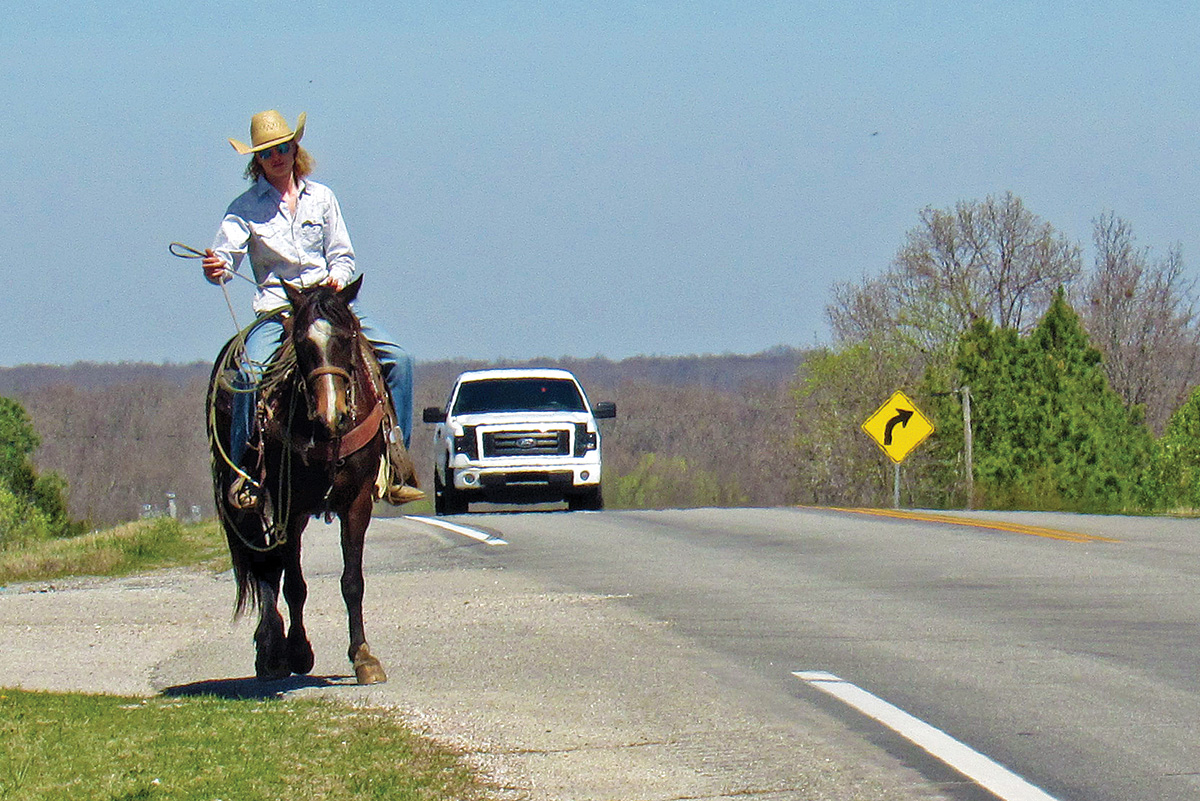
Motorist Responsibilities
Motorists also have a legal responsibility toward horses and riders. While these laws generally involve common sense, many riders can swap stories about misbehavior that could have gotten someone hurt.
Drivers should always slow down and move over when passing riders and not make any sudden noise or movements that might spook the animal. These rules help prevent accidents and protect the rider and mount. Disobeying these rules could result in serious legal consequences.
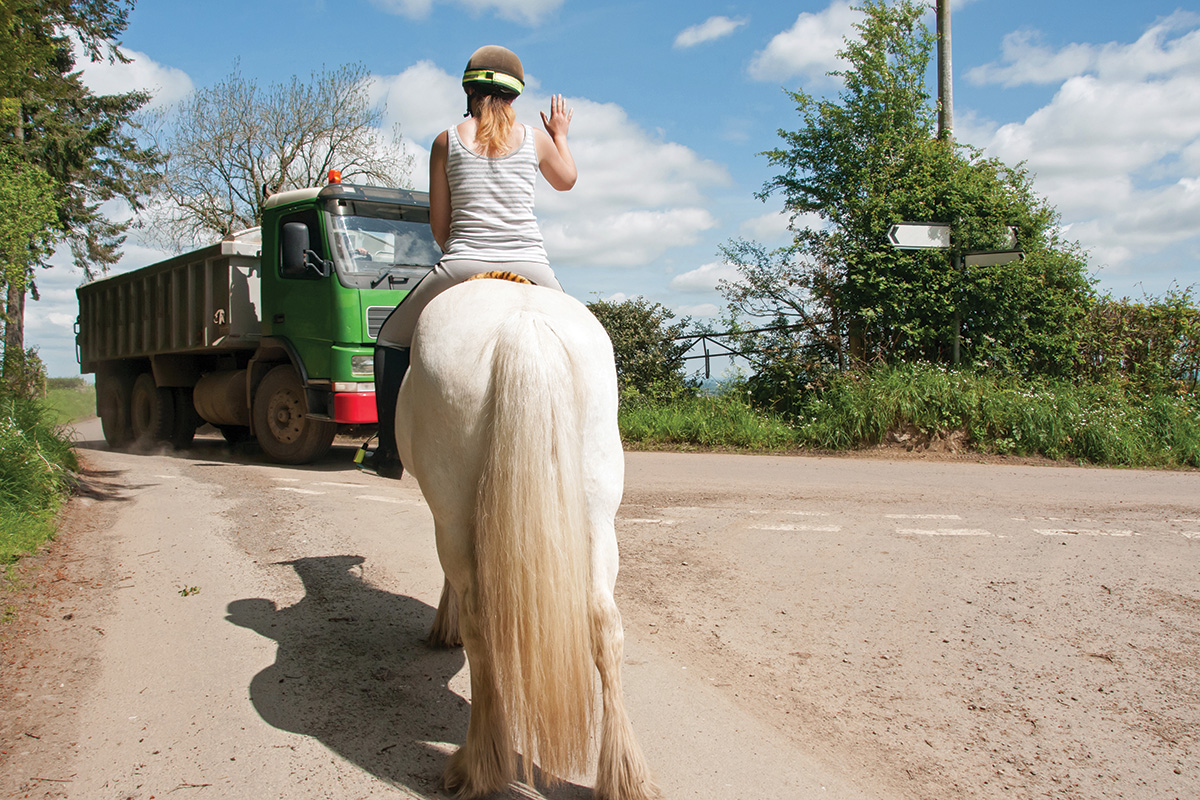
“Under Colorado’s law, if the driver of a motor vehicle violates the traffic code in any way with respect to a horse, such as unsafe passing, following too closely, failure to yield right of way, et cetera, the driver of the vehicle can be fined,” says Riley. “Under Colorado civil law, a good claim of negligence could be made against the driver of a motor vehicle who harms the rider—or the horse—by a traffic-related action or omission.”
One Oklahoma statute states that vehicles must be equipped with a horn and shall give an audible warning when reasonably necessary. However, it specifically states that drivers shouldn’t “use a horn when passing a person riding a bicycle, equine or animal-drawn vehicle under normal conditions if no imminent danger of a collision exists.”
“[In some states] it’s illegal to honk your horn or make any loud noises, such as spinning your tires or revving your engine, when passing horses on the road, but it isn’t illegal in Virginia,” says Roselli. “However, if a motorist doesn’t follow the law regarding how to pass a horse on the road, they can be fined, or worse. If their actions cause injuries to horse(s) or rider(s), they could be facing a lawsuit.”
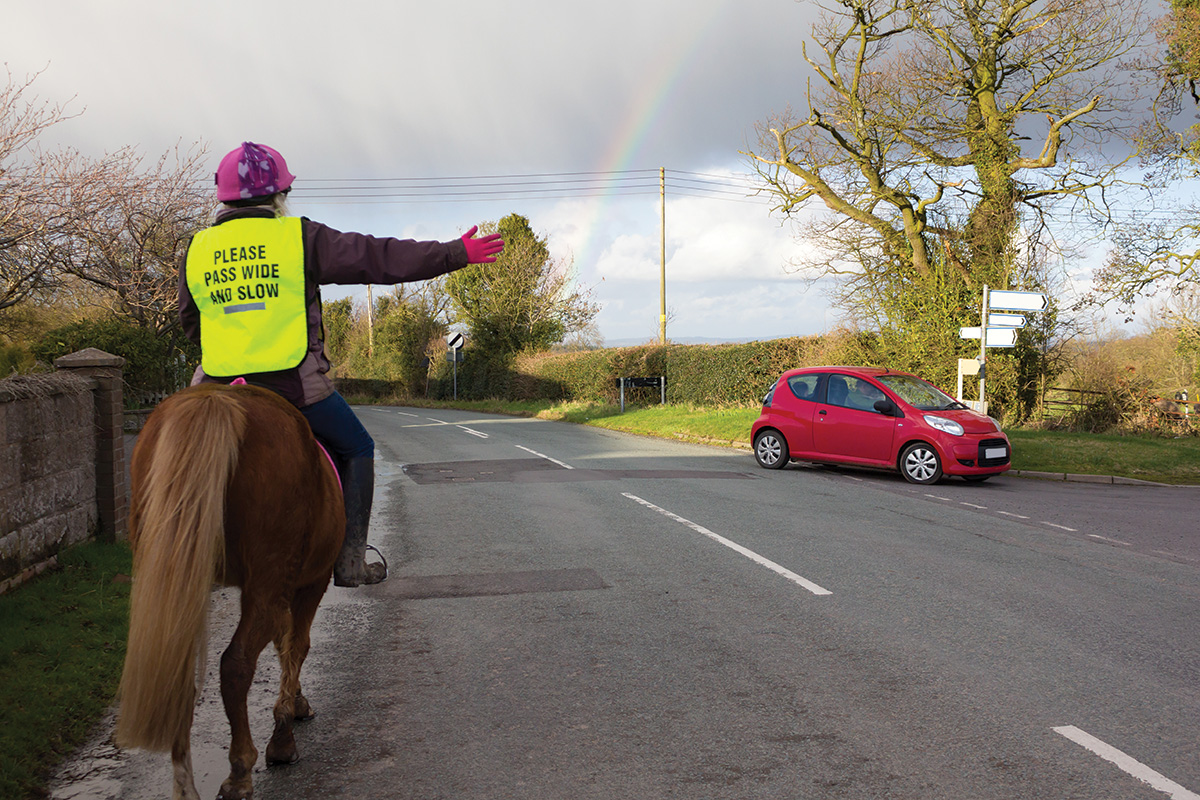
She says that most states regulate the way in which motorized vehicles may pass horses or horse-drawn vehicles. Sometimes these laws are detailed in one sense, but not detailed enough in another.
“In Virginia, motorized vehicles must pass at least 3 feet to the left of the horse or horse-drawn vehicle and not proceed back into the lane until ‘safely clear,’ which can be problematic because drivers who aren’t horse enthusiasts may not understand how much space to safely provide for a horse to avoid injury or spooking,” Roselli says.
Don’t Drink and Ride
“Reckless” riding will potentially get you into legal trouble in Nevada, and riding under the influence (RUI) is illegal pretty much everywhere. Like other modes of travel, drinking and riding don’t mix.
Roselli says you can get a DUI on horseback in some states. In others, including Virginia, you can be fined or arrested for public intoxication if you try to ride your horse home from the bar when drunk.
“It’s unlawful to ride a horse on a highway in Colorado if the rider is under the influence of alcohol, any controlled substance or any stupefying drug,” says Riley. “The violation is a Class B traffic infraction, which may result in a fine of up to $100.
“A rather notorious situation [occurred] in 2013 when a man riding a horse drunk was arrested,” she continues. “He was observed riding erratically, slumped on the side and at one time beating the horse. He was charged with animal cruelty along with riding under the influence.”
No matter the laws in your state, don’t forget that horses have a mind of their own and instincts that may cause them to act in unexpected ways. Some horses spook more easily than others, while some could have a cannon shot off next to them and won’t flinch.
In order to avoid a potentially tragic accident, it’s important that you know your horse well before riding him on any road where unpredictable motorists will be present.
This article about safety for riding your horse on the road appeared in the August 2022 issue of Horse Illustrated magazine. Click here to subscribe!





